65 Practical Startup Business Goals Examples To Craft Success in 2025

Sorry, there were no results found for “”
Sorry, there were no results found for “”
Sorry, there were no results found for “”

Launching a startup is an exciting prospect but comes with its fair share of challenges. Unlike established businesses with access to several resources, startups operate in an environment of constraints. As a result, they have to adapt and innovate constantly to stay ahead of the curve.
Navigating challenges becomes easier if you have a goal in mind. It is a marker of success and lines the path to the overarching business objective. We’re about to share a blueprint of startup goal-setting, along with real-world startup business goals examples to inspire you and illustrate their application.
Are you ready to chart a clear course for your startup’s success?
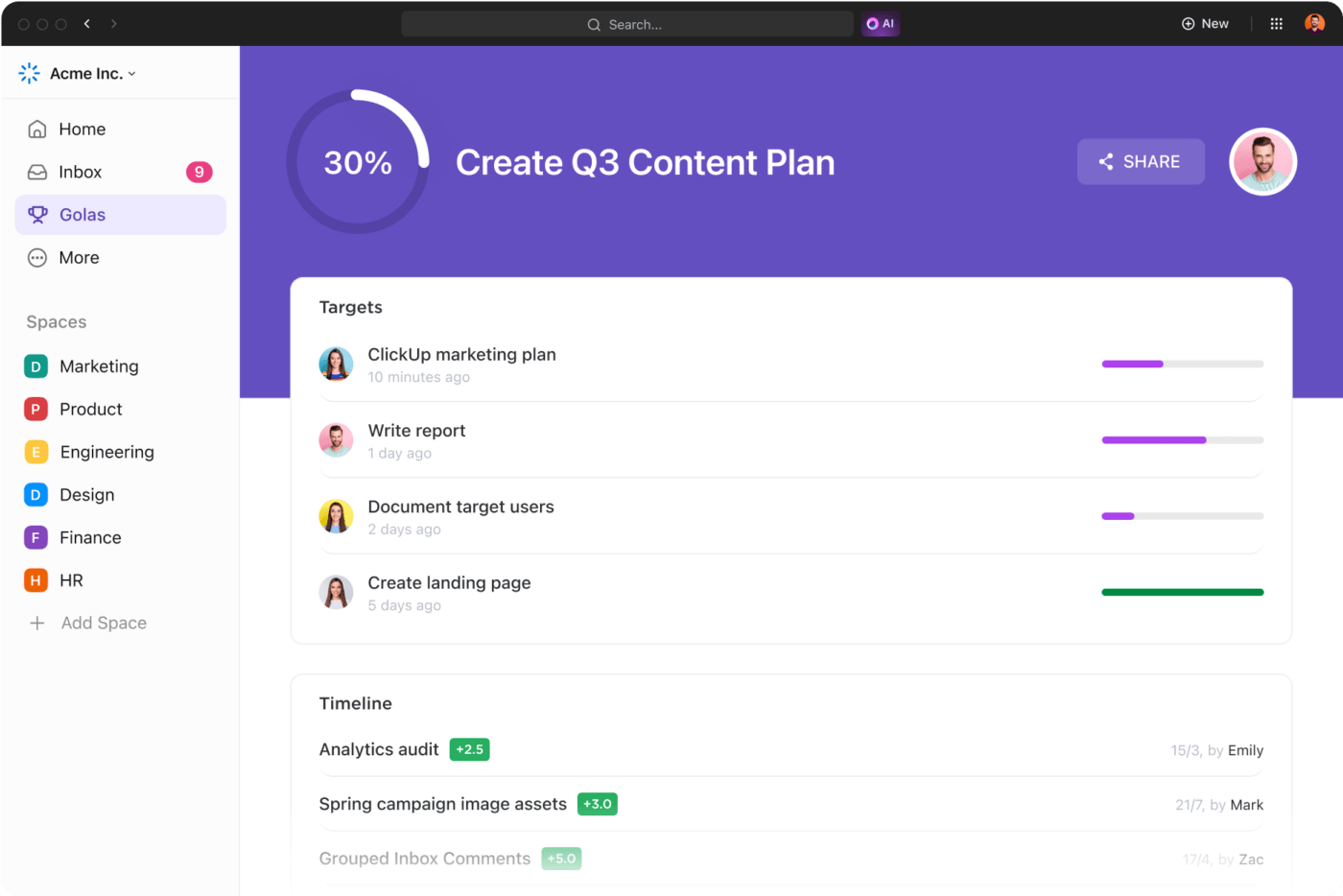
Every business kickstarts in the pursuit of success.
A business goal is a marker or milestone on the road to this success.
It is a specific target or an outcome that organizations aim to achieve. It reflects a company’s vision and understanding of “success” in the short or the long term.
Although the concept of business goals is common across enterprises, its definition varies significantly.
For instance, an eCommerce store may view success through metrics like average order value or sales revenue. On the other hand, a social enterprise dedicated to safe drinking water accessibility may view success as the number of water filtration plants installed.
You might argue that such variation is obvious since these startup business goal examples concern two highly diverse sectors. However, even businesses operating in the same sector may employ different scales to mark their business goals.
For example, an online retailer focuses on web traffic, while brick-and-mortar stores are busy counting footfall. A SaaS-based startup may define business goals regarding customer acquisition, while an established counterpart may analyze subscription renewals!
Even though business goals differ, their primary function remains consistent—to serve as a guiding principle for informed decision-making.
📮 ClickUp Insight: 78% of our survey respondents make detailed plans as part of their goal-setting processes. However, a surprising 50% don’t track those plans with dedicated tools. 👀
With ClickUp, you seamlessly convert goals into actionable tasks, allowing you to conquer them step by step. Plus, our no-code Dashboards provide clear visual representations of your progress, showcasing your progress and giving you more control and visibility over your work. Because “hoping for the best” isn’t a reliable strategy.
💫 Real Results: ClickUp users say they can take on ~10% more work without burning out.
Your business goal is a North Star to guide your startup journey. Here’s how it contributes to the overall success and sustainability of your startup:
The business goal or objective outlines the company’s aspirations. While the objective is more short-term, the long-term business goal governs every business decision and strategy so that you don’t lose sight of the bigger picture. Naturally, the short-term objectives tie up to the overarching goal. For instance, increasing revenue through sales could help with long-term business objectives of growth and expansion.
Having such clarity of the short and long-term expectations offers a sense of direction to the team. Using this as their focus, they can plan key tasks or activities to realize such goals. It fuels concerted efforts through effective time, effort, and resource management.

Organizations can use SMART business goals as a measure of success. SMART goals are Specific, Measurable, Achievable, Relevant, and Time-Bound. They convert goals from vague entities into quantifiable metrics to track progress.
Say your basic business goal is to increase website traffic. Then, as a SMART framework, it would read as ‘Increase organic website traffic by 30% within the next six months. ‘ Notice the difference? SMART business goals turn generic ideas into specific, measurable outcomes. They help you objectively assess your startup’s performance and tweak strategies using data-driven insights!
Given a startup’s dynamic environment, it is easier for priorities to shift. Similarly, daily tasks can eclipse the bigger picture and detract from the larger goal.
Startup business goals shield you from distractions and recenter your ideas, strategies, and actions. They cultivate a sense of accountability by acting as a yardstick for performance. At the same time, we’ve seen how they serve as quantifiable benchmarks to track progress toward achieving the broader vision.
You may review your goals occasionally to get an idea of your startup’s growth while also identifying areas for improvement. Such a holistic overview allows you to prioritize impact-based activities and foster a greater sense of ownership and responsibility.
Business goals are a source of motivation for startup founders and team members. Having a clear shared objective to work towards and clarity on how it ties up with the larger goals drives collaboration and motivation. Plus, publicly shared goals promote transparency, which instills accountability.
And when goals are reached, recognizing personal and organizational achievements improves team morale.
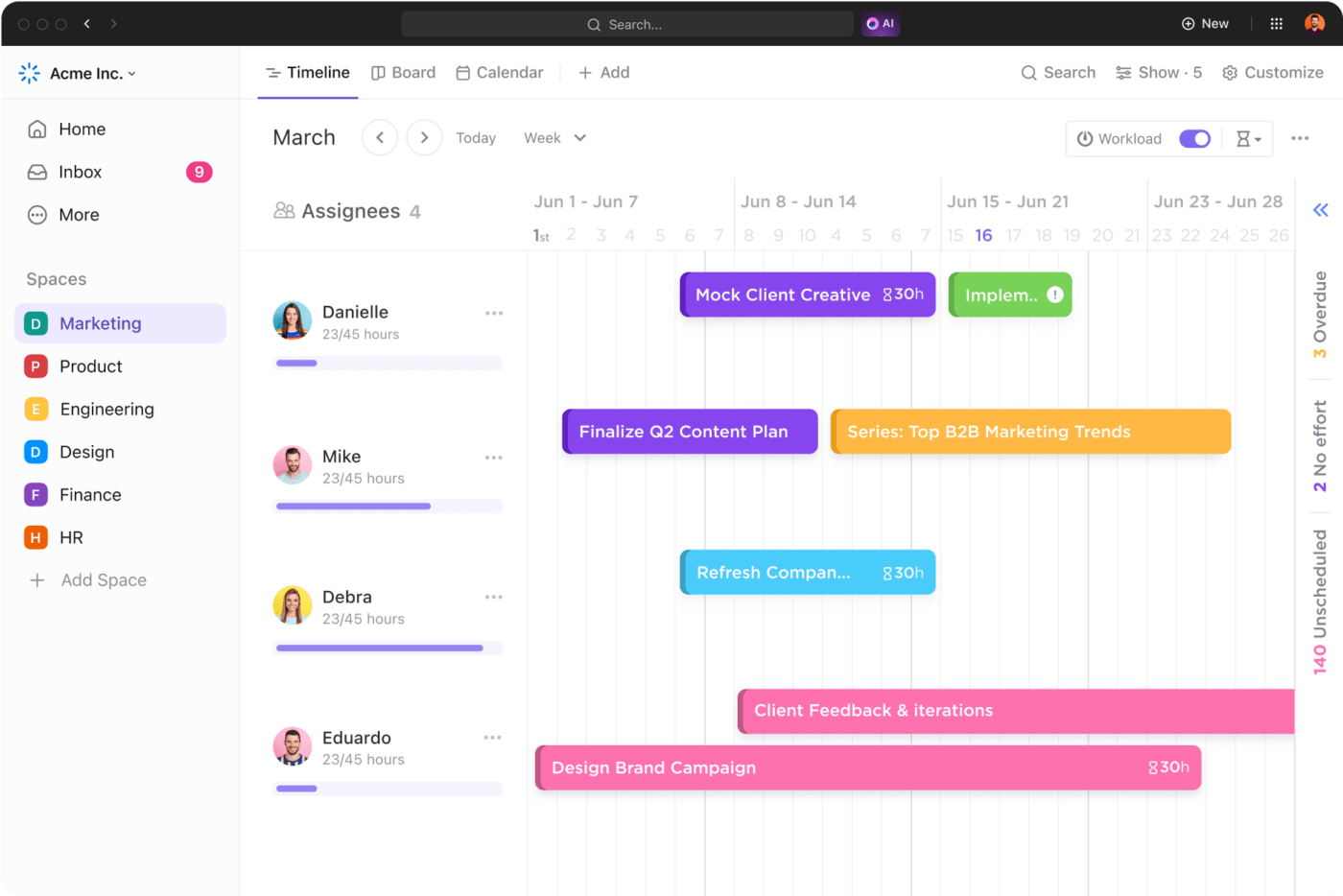
Setting business goals also involves task prioritization. Entrepreneurs may prioritize based on importance, impact, and urgency. Such weighted distribution of focus enables the smart allocation of limited resources, which is fairly common in a startup setup.
With clearly articulated and prioritized business goals, you can effectively allocate resources like time, money, and staff to activate success.
This ensures that your startup can meet critical business objectives and launch minimum viable products (MVPs) that can kick-start growth while you secure funding for resource reinforcements!

Startups are highly vulnerable to risks. Identifying potential risks or challenges early on and addressing them or mitigating their impact is instrumental in a startup’s success.
To anticipate hurdles, goal-setting strategies often employ analytical tools and frameworks like SWOT analysis, risk matrices, etc. Knowing these beforehand allows entrepreneurs to prepare holistic risk management strategies and contingency plans that help navigate these challenges in a hands-on manner. This level of preparedness minimizes risks or, if not outright, eliminates them.
While a strong mission statement lays the foundation for your startup, the goals guide your journey. Goals transcend brand building and market positioning and illustrate your understanding of success. Well-defined goals showcase your understanding of the market, target audience, and value proposition.
Imagine two startups: one laser-focused on explosive business growth with a series of fast-paced goals. Another that prioritizes scalability and sustainability through long-term goals spaced out over a considerable duration. In both cases, clear goals paint a picture for investors and partners.
Partners can evaluate if your startup is a good fit for a strategic partnership, while investors can calculate their anticipated return on investment (ROI). They can also adjudge whether the startup’s mission, vision, and values align with theirs. This alignment will attract meaningful partnerships and investor relations for mutual benefit.

Clear startup goals are pillars of strategic planning. They define your desired outcomes, establish a roadmap for success, and help you navigate the journey. Use them to devise short-term and long-term strategic plans. The cumulative and concentrated result of individualistic strategic plans will enable your startup to take on big, hairy, audacious goals that may have felt unsurmountable at one point.
Want to consolidate tools and set your small business up for success in 2026? Check out our step by step playbook
Now that you understand the mission-critical role of business goals, especially in the context of startups, let’s learn how to set these. Below is a step-by-step guide to setting a business goal:
If you haven’t done it already, start by defining your startup’s mission and vision statement.
The vision statement demonstrates the long-term aspirations of your business. On the other hand, the mission statement describes the driving force and guiding principles of your startup’s activities. The mission statement is a roadmap to the vision statement; think of the former as your business objectives and the latter as the goal.
Ensure that the two align with your company’s offerings and core values.
For example, here’s how Amazon weaves its mission statement through its introduction:

Amazon’s goal of becoming the Earth’s most customer-centric company is evident from its trailblazing effort in personalizing the eCommerce sector and its expansive product range.
On the other hand, Apple showcases its workplace culture through personalized stories and anecdotes from its team members:

Apple’s mission statement, ‘We’re committed to leaving the world better than we found it,’ will attract talent that aligns with this goal.
In this way, mission and vision statements reflect the company’s business model, aspirations, and culture.
Along these lines, articulate what stirs your passion and frame it as your mission and vision statements.
Once you’ve done the groundwork, analyze your current state. You may use any business analysis framework for a comprehensive and cross-sectional evaluation. We find the SWOT analysis to be a great starting point.
A SWOT analysis template highlights your startup’s strengths, weaknesses, opportunities, and threats (SWOT). It sheds light on your internal strengths and weaknesses, such as team collaboration, skill or talent gaps, resource availability, etc. At the same time, you can visualize external opportunities and threats, such as target market conditions, customer demands, competitors, etc.
Keeping all of this in mind, the ClickUp Small Business SWOT Analysis template is designed to help you strategize, plan, and make informed decisions. Such a well-rounded and holistic analysis helps set realistic and attainable business goals. It also lets you divide your analysis into different categories, such as Marketing, Operations, Finance, etc., to assess each aspect of your business.

You now see your destination. You know where you currently stand. It’s time to bridge the two!
Identify the key focus areas to accelerate your journey to success. It could be through product innovation, brand recognition, operational efficiency, increasing market share, retaining customers, or a blend of all of these.
You might eventually come up with four or five desired goals. However, you may not have the resources and capacity to achieve these together. Hence, you should set priorities for your business goals and define them along SMART parameters.
Each goal must be clear, quantifiable, and time-bound to align with your startup’s business objectives. Be as specific as possible with your SMART goals, as granularity will improve your chances of achieving the goal.
To make this task easier, leverage readily available resources, such as goal-setting templates.

The previous step may lead you to believe that your job is done. However, goal-setting is more than just documenting business goals—it is part planning and part implementation.
So, once you have your business goals ready, break them down into smaller, actionable steps. Continue this division until you reach the smallest task, activity, and timeline required to achieve each goal. Doing so will help you create a comprehensive and actionable roadmap for goal execution.

When the work breakdown structure is ready, assign these tasks to specific departments, managers, or team members. Clearly defining roles, responsibilities, and expectations will keep your team accountable and focused on goal achievement.
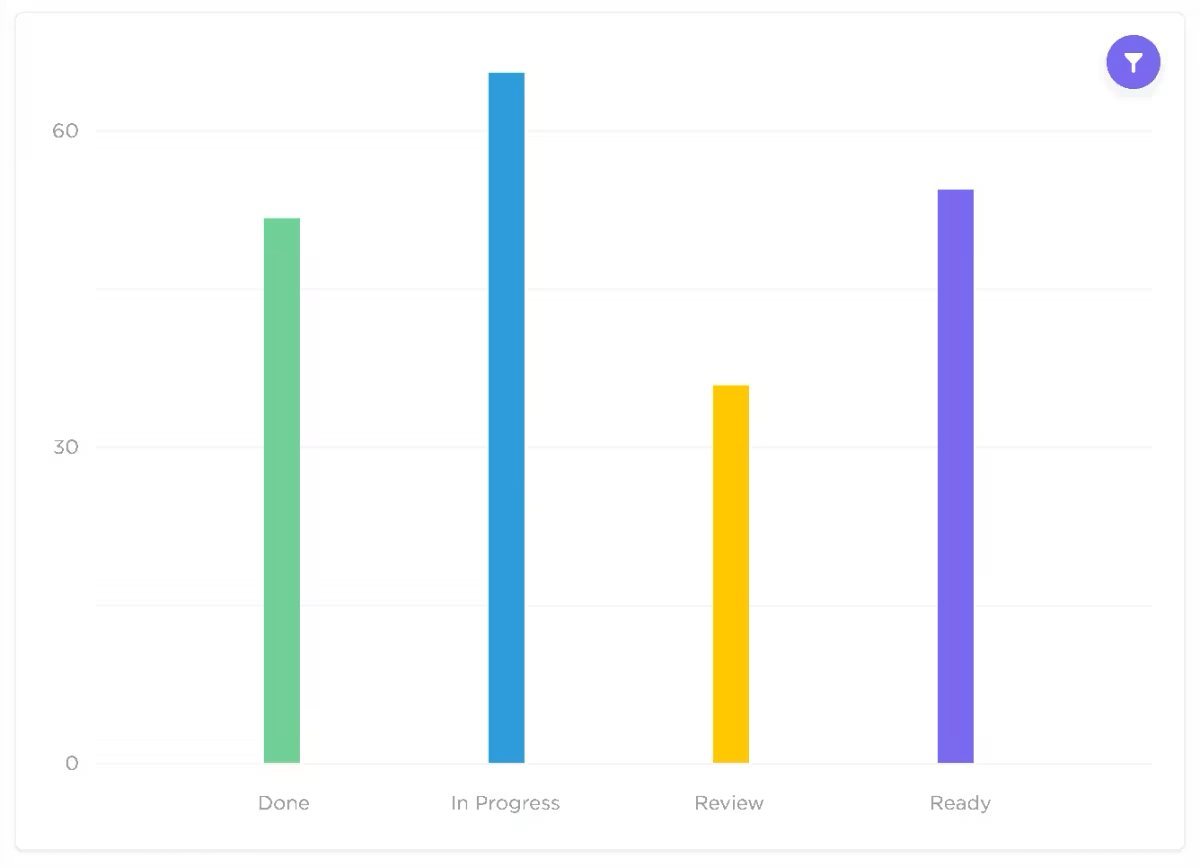
Business goals are your marker of success. So, use them for measuring progress.
Track the appropriate goals or their underlying metrics and key performance indicators (KPIs). Most project management tools, including ClickUp, feature an interactive dashboard that helps you visualize progress in real time. Map all the metrics and KPIs you wish to track onto this dashboard and view their progress and any deviations so you can take action in a time-bound manner.
These dashboards also allow you to review your business goals and update them instantly. Your business goal may have changed due to evolving priorities, shifting market conditions, customer feedback, new opportunities, etc. Update them on the fly to run a highly responsive, adaptable, and resilient startup!

We’ve already discussed how celebrating milestones and achievements helps improve team morale. It is also a tangible indicator of success and motivates the team to move on to the next item on the checklist.
Acknowledging individual or team efforts contributing to business objective attainment promotes a sense of belonging and community. The resulting engagement improves team cohesiveness. Therefore, celebrating milestones and achievements should be a part of your goal-setting strategy.
Finally, business goal setting is not a ‘set it and forget it’ job. Embracing a culture of continuous learning and improvement will help startups refine the business model with each cycle.
So, treat goal setting as a continuous process that considers internal and external stakeholder feedback, product improvement and innovation, and experimentation to drive business growth.
This positive feedback loop will improve business goal-setting iteratively.
Setting goals for your startup:
This brings us to the end of all the theoretical aspects of business goal setting. Let’s now delve into some real-world examples to solidify your understanding of business goals and to inspire you. From financial to customer satisfaction goals, we’re about to discuss all the different types of business goals for startups, along with appropriate examples. And yes, we will describe each example as SMART goals as far as possible.
On that note, here’s a detailed list of business goals to add to your startup business plan template:
Financial business goals revolve around plans to boost revenue, improve profit margins, reduce costs, and acquire funding. They describe the desired financial performance or health of the company. Use this business objective to maximize revenue and minimize expenses to run a sustainable startup.
Here are some business goals examples to manage your finances better:
Pro Tip: Track your startup’s financial goals using metrics like:
As the name suggests, these business goals look to improve employee retention. Your employees are the target audience for these goals, so you should focus on driving employee satisfaction, engagement, and loyalty. Earning your employees’ goodwill reduces turnover rates and ensures continuity in workforce expertise.
Consider the following team goals to improve employee retention:
Pro Tip: Track your startup’s employee retention goals using metrics like:
While the employee retention goal aims to retain talent, productivity business goals seek to enhance operational efficiency and output. As such, they revolve around day-to-day activities that can streamline productivity levels. You may set targets to optimize workflows, reduce waste, eliminate inefficiency, and increase per-employee output across the company.
Here are some examples of business goals that help achieve success by nurturing a highly productive workforce:
Pro Tip: Track your startup’s employee productivity goals using metrics like:
Remember to tweak this according to the employees’ department and expected deliverables.
Startups can grow by generating brand awareness and earning a solid reputation. This strategy focuses on forging a positive brand perception in the target audience’s minds. Businesses can achieve this by increasing brand visibility, earning trust and credibility, and running brand loyalty programs.
Below are a few business goals examples to increase brand awareness and reputation:
Pro Tip: Track your startup’s brand awareness and reputation goals using metrics like:
Business goals about marketing strategies explore ways to promote products or services, generate more leads, drive customer engagement, and forward highly qualified leads to sales. They guide marketing efforts by specifying outcomes such as boosting conversion rates, increasing brand awareness, unlocking web traffic, etc., to match the larger business goals.
Some examples of marketing strategy goals include:
Pro Tip: Track your startup’s marketing goals using metrics like:
Sales and revenue goals are an extension of the marketing goals. They focus on attracting more sales or revenue in a time-bound fashion. The sales team may work on acquiring new customers, upselling and cross-selling activities, and other revenue-generating initiatives to infuse sustainability and profitability into your startup’s growth.
Here are a few examples of sales goals to get more sales:
ClickUp Smart Tips: Track your startup’s sales and revenue goals using metrics like:
These business goals focus on enhancing customer satisfaction and delivering memorable customer experiences to cultivate long-term customer relationships. Startups may aim to improve customer retention through various strategies, from loyalty programs to exceptional customer service to improving product quality.
Here are some goals that you can set to improve customer satisfaction:
Pro Tip: Track your startup’s customer satisfaction and retention goals using metrics like:
They say a goal is just a wish without a plan. In other words, you must cement your business goals with actionable plans and strategies to make them work.
To develop and execute a solid business plan, you will require the right tools, platforms, software solutions, and systems. These add structure to your plan and help you reach your goals faster.
Here is an overview of the various solutions you can use to meet the different types of business goals:
The project management software is the Swiss Army Knife of setting business goals.
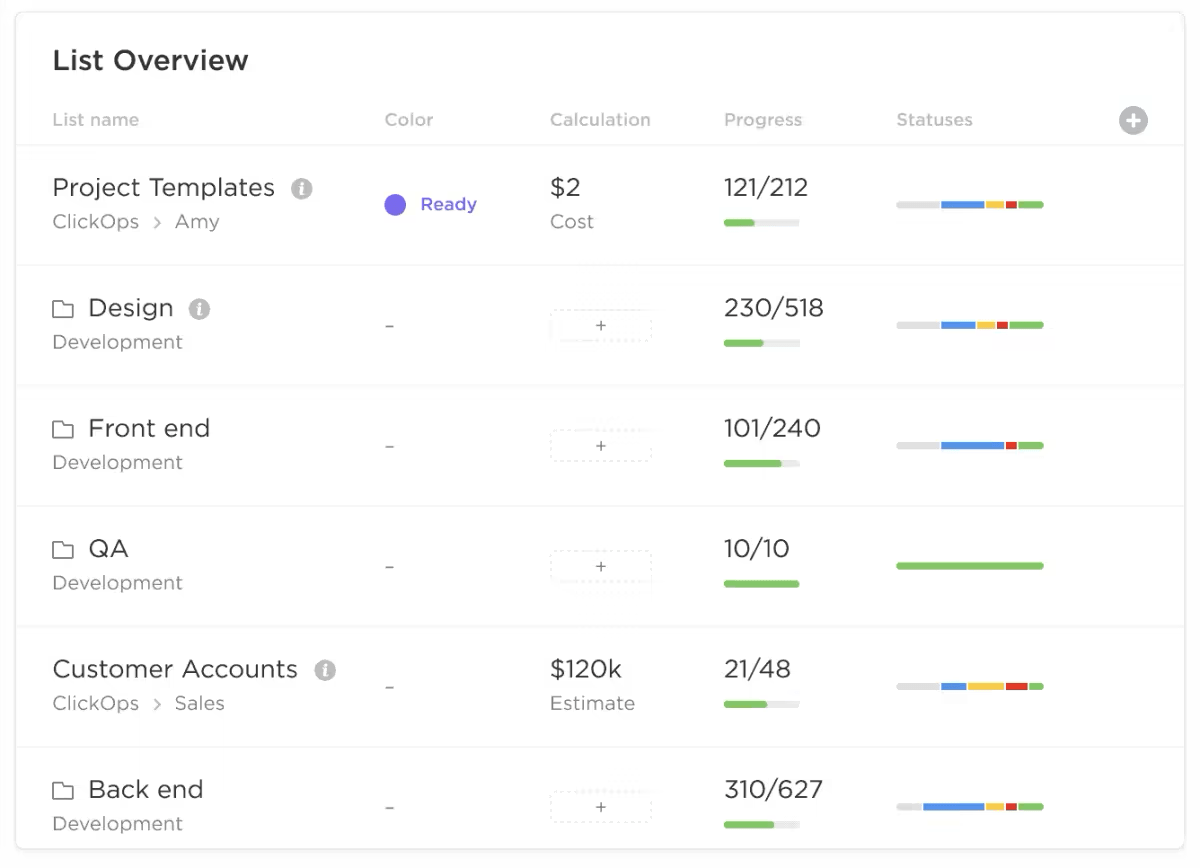
Project management software helps set attainable goals by acting as a centralized platform dedicated to the efficient planning, organization, and execution of projects. To meet this objective, these platforms offer features for task management, project scheduling, collaborative working, team communication, etc.
These enable startups to logically break down long-term business goals into smaller, manageable objectives so that teams can prioritize work tasks. Such hands-on project management improves transparency and accountability, helps track progress, and manages risks and resources to deliver results per specification, timeline, and budget.
We’ll talk more about how you can use ClickUp for Startups in the later section to grant you practical exposure.

CRM tools allow businesses to foster meaningful and enriching customer relationships to drive organizational growth.
CRM platforms centralize all customer data, communication channels, and interactions to offer you a well-rounded view of customer demands, preferences, and behaviors.
Using these insights, startups can curate personalized experiences to improve customer satisfaction and drive brand loyalty. Personalization could be achieved through unique marketing experiences, targeted sales campaigns, or improved customer service to delight customers throughout their journey.
Additionally, its pipeline management features allow startups to track leads, opportunities, and deals to enhance conversions and revenue.
ClickUp functions as both a project management software and CRM, an all-in-one platform designed to streamline various workflows.
Visualize and manage sales pipelines with over 15+ ClickUp Views, benefit from email integrations, build a customer database, analyze customer data, and much more— all on ClickUp.

So, if your business goals revolve around acquiring new customers or retaining existing ones, then investing in a CRM platform like ClickUp is a smart move.
Whether it is through the loss of employee productivity or by eating into revenues—inefficient processes cost businesses. While established businesses might be able to absorb some cost overheads, the same could be disastrous for startups. After all, they are often resource-strapped as it is!
Startups may turn to process mapping tools to mitigate risks. Use them to visualize, analyze, and optimize business processes and workflows. They allow you to conduct a thorough analysis of the current processes to identify bottlenecks, inefficiency, and areas of improvement. Understanding these hurdles helps formulate effective solutions and optimization initiatives. They also standardize processes to maintain consistency, quality, and compliance across teams and departments.
Pro Tip: Leverage ClickUp as your process mapping tool. ClickUp Whiteboards and mind maps help visualize business processes.
Such a dynamic approach to optimizing processes drives operational excellence and increases profit margins.
You will require a robust data analytics tool to analyze your marketing and sales performance. They make these two mission-critical activities measurable and more accurate. Most importantly, they are compatible with high volumes of data to help you manage campaigns on the fly.
Leverage these tools to gain insights into market trends, campaign effectiveness, customer behavior, and conversion rates. Tracking these variables helps identify untapped opportunities, recalibrate strategies, and allocate resources effectively to achieve sales and marketing business goals. From personalizing business messaging to benchmarking performance, marketing and sales analytics tools help startups achieve their growth goals.
Pro Tip: Use ClickUp Dashboards to track sales and marketing metrics in real time, implement strategies, and benchmark performance.
Financial management systems are crucial for startups to meet their financial goals. It helps startups manage budgets and finances effectively, improve shareholder value, maintain healthy profit margins, and ensure compliance. They may even come equipped with AI tools that help with revenue forecasting, demand-supply prediction, and budget utilization with heightened accuracy.
They help maintain accurate financial records and reports. Such well-documented insights fuel informed decisions while managing cash flows, tracking and controlling costs, and optimizing resources. Additionally, they help maintain legal and regulatory compliance by maintaining an auditable log of all financial decisions.
By improving financial visibility, these systems maintain transparency and accountability while maintaining financial stability.
Pro Tip: Deploy ClickUp as your account and finance management software to stay ahead of your financial goals.
ClickUp is every startup’s friend. After all, we’re a startup ourselves, and we know how challenging—and exhilarating—the startup journey can be. ClickUp is our attempt to make this journey less stressful for innovative startups.
So, here’s a look at how ClickUp helps in setting business goals:

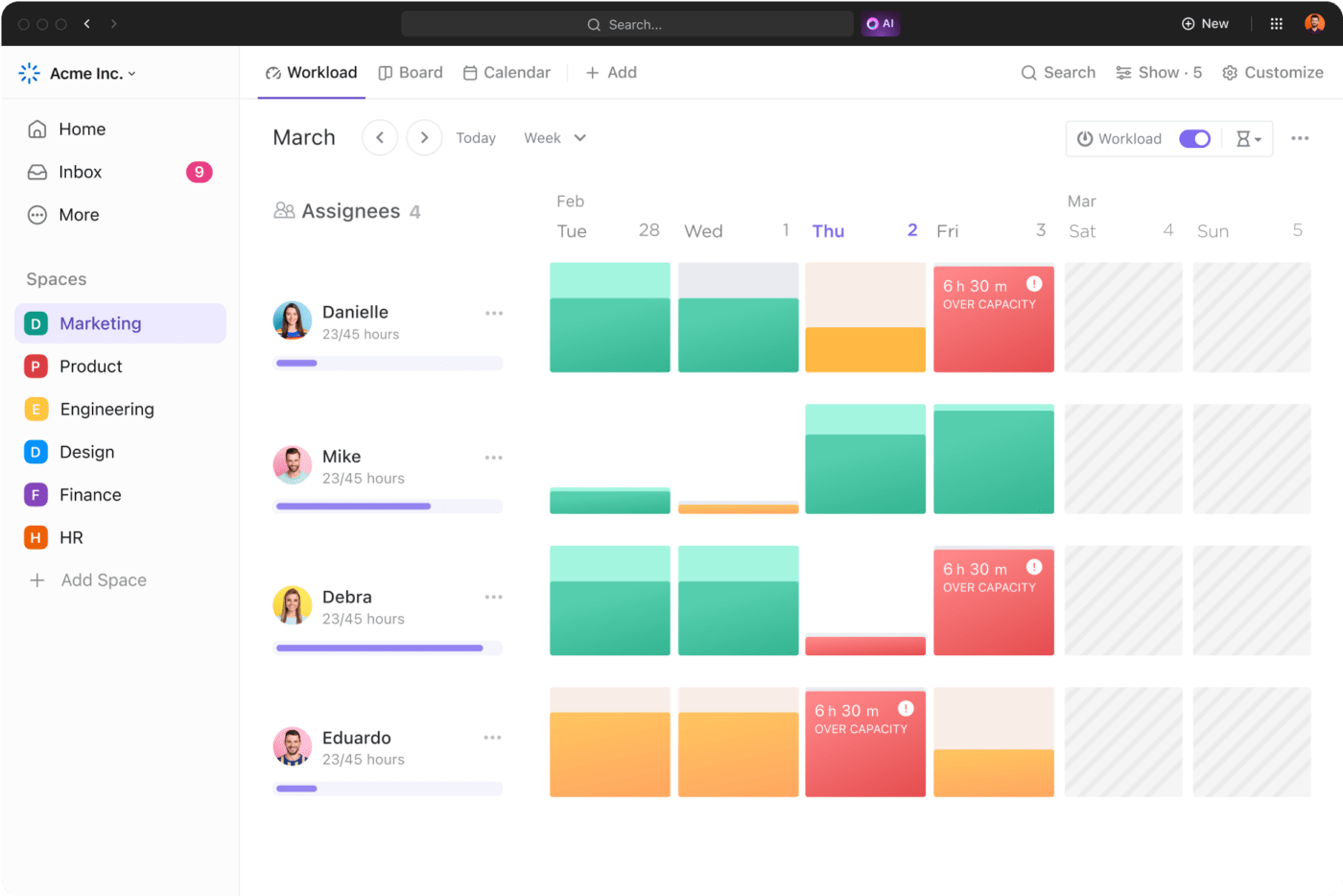



One of ClickUp’s greatest USPs is that it is highly customizable to meet your specific needs. You can use it as a project management platform, a task management tool for HR and other teams, and a campaign and customer management platform for marketing and customer support—the possibilities are endless.
So, leverage its versatility to meet your different business goals without spreading them across multiple tools and platforms. As we often say, one is all you need!
Startup business goals are your compass for venturing into the seas of entrepreneurship.
Goals give a sense of direction, act as a marker of progress, generate accountability, motivate teams, support strategic planning, and attract investors and partners. Each of these benefits propels your startup one step closer to success.
We highly recommend the startup business goal examples above, as they will inspire you to set SMART goals for your company. All that remains is to use suitable tools and platforms to execute and track these goals. You can choose from various solutions ranging from CRM to process mapping tools and beyond.
On the other hand, you can select ClickUp and replace the disparate tech stack with a centralized one. ClickUp promises flexibility and scalability that will grow along with your startup.
Sign up for free and explore!
Setting priorities for your business goals involves assessing the importance, urgency, and impact of these goals on your startup’s core objectives. Identify those that tightly couple with the mission, vision, and strategic priorities of your startup and place them first. Then, consider factors like potential risks or setbacks, dependencies, and resource availability to meet these goals. Finally, use prioritization techniques like the MoSCoW method or the Eisenhower matrix to assign weighted priorities to your goals.
Review and update your startup’s business goals to keep up with evolving priorities, emerging opportunities, and shifting market conditions. Since startups are more dynamic, you may review your business goals every 3-6 months to stay responsive to volatility. Upon business consolidation, you can perform this exercise annually.
You can achieve your business goals using the following tools:
Don’t treat falling short of your startup business goals as a failure. On the contrary, think of it as a learning opportunity through which you can:
© 2026 ClickUp